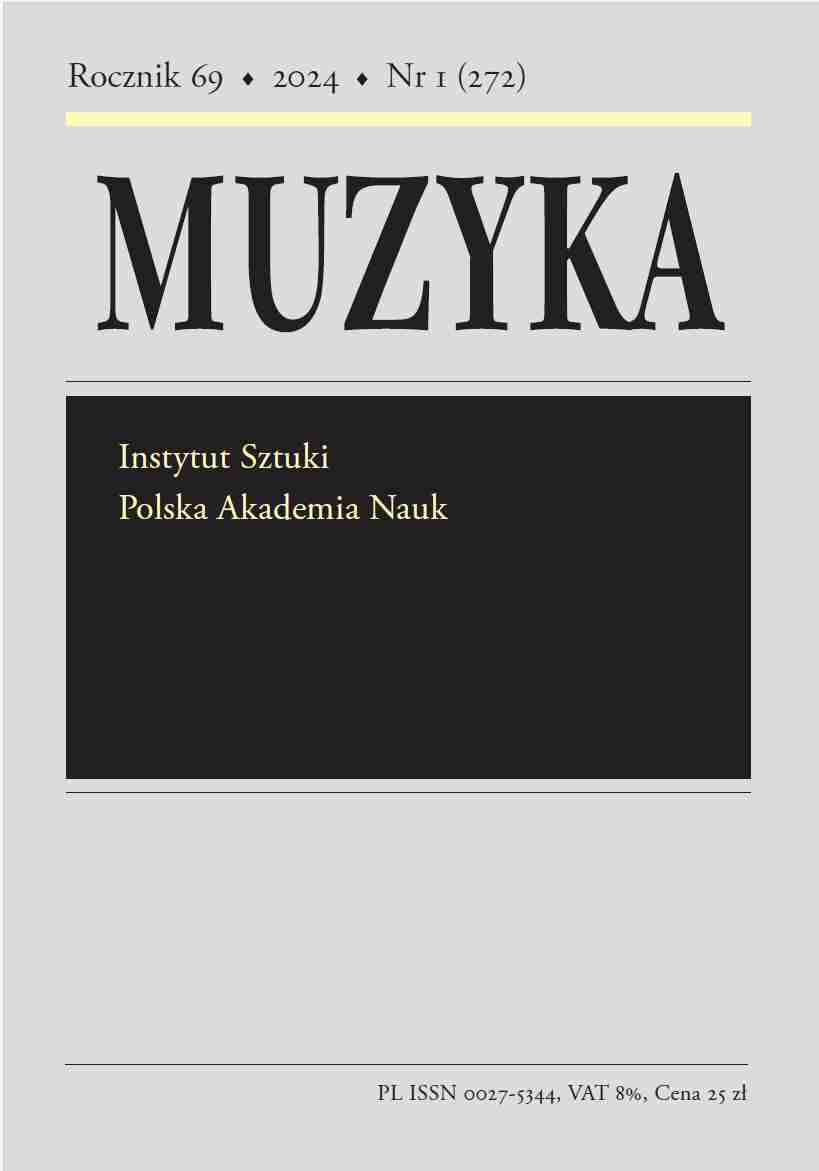Teksty Petrusa Wilhelmiego de Grudencz w kontekście późnośredniowiecznych artes poetriae
Bartosz Awianowicz
Uniwersytet Mikołaja Kopernika w Toruniu (Polska)
https://orcid.org/0000-0001-7380-2272
Abstrakt
Biografia, jak i twórczość kompozytorska Petrusa Wilhelmiego de Grudencz (1392–po 1452) od momentu odkrycia go przez Jaromíra Černego doczekały się już bogatej literatury przedmiotu, jednak wciąż nieopracowany pozostawał dorobek stricte poetycki kompozytora. Niniejszy artykuł stawia sobie za cel osadzenie tekstów Petrusa w kontekście średniowiecznych artes poetriae, podręczników łączących w sobie elementy gramatyki, poetyki i przede wszystkim retoryki, z którymi kompozytor mógł się zetknąć jeszcze w rodzinnych Prusach, a z pewnością poznał je dokładnie podczas swych długich studiów w Krakowie (1418–30). Na ówczesnym uniwersyteckie krakowskim czytano wówczas przede wszystkim należące do tego nurtu Nową poetykę Godfryda z Vinsauf oraz Laborintus Eberharda z Bremen. W stolicy ówczesnej Polski lub nieco później w Wiedniu mógł się Petrus zetknąć również z De arte prosayca, metrica et rithmica Jana z Garlandii.
Eberhard z Bremen daje w swym dziele przejrzysty podział poezji na opartą na klasycznych miarach wersyfikacyjnych poesis metrica, opartą na rymie i rytmie poesis rithmica lub rigmica, oraz swobodną formę muzyki kościelnej zwaną prosa. Wśród dwudziestu dwóch utworów Petrusa Wilhelmiego (z akrostychem jego imienia) wydanych przez Jaromíra Černego oraz kilkunastu kolejnych zidentyfikowanych w ostatnim dwudziestoleciu tylko dwa – otwierający edycję Černego utwór presulis eminenciam (i/1) i kanon (rotulum) pneuma erumpnosi telluris rei z punktu widzenia średniowiecznej ars poetriae można zaklasyfikować jako zrytmizowaną prozę. Wszystkie pozostałe utwory należą do poesis rithmica, żaden natomiast nie podlega klasycznej wersyfikacji metrycznej. Wśród utworów z akrostychem PETRVS dominują rhytmi compositi, najczęściej o rymach abab lub aab ccb. stosunkowo nieliczne odstępstwa od zasad poetyki można potraktować jako wyraz inwencji autora (rymy abab w Probitate eminentem i aaab cccda aeae w Presulem ephebeatum), ale też jako świadectwo pewnej nonszalancji albo samego Petrusa Wilhelmiego, albo kopisty (nieregularności w wersyfikacji w Pregrata era, Pontifices ecclesiarum i Probitate eminentem), lub też jako wynik późniejszej ingerencji w pierwotny tekst (wersy z imieniem Andreasa Rittera w Probitate eminentem). Natomiast w najdłuższym utworze Petrusa – Pontifices ecclesiarum – mamy do czynienia z zastosowaniem kluczowego dla stylistyki Godfryda z Vinsauf „układu kunsztownego” (ordo artificialis) i „trudnej ozdobności” (ornatus difficilis).
Instytucje finansujące
Autorzy
Bartosz AwianowiczUniwersytet Mikołaja Kopernika w Toruniu Polska
https://orcid.org/0000-0001-7380-2272
Statystyki
Abstract views: 200PDF downloads: 108
Licencja
Prawa autorskie (c) 2024 Bartosz Awianowicz

Utwór dostępny jest na licencji Creative Commons Uznanie autorstwa 4.0 Międzynarodowe.
Autor udziela wydawcy niewyłącznej i nieodpłatnej licencji (CC BY 4.0) na wykorzystanie tekstu w „Muzyce”, zachowuje nieograniczone prawa autorskie i zobowiązuje się do podawania miejsca pierwodruku w „Muzyce” przy ponownym wykorzystaniu artykułu (umowa licencyjna do pobrania). Zgłaszając artykuł do publikacji, autor wyraża zgodę na jego udostępnianie na licencji CC BY 4.0.
Artykuły w zeszytach od 2018/1 do 2022/3 publikowane były na licencji CC BY-NC-ND 4.0. W tym okresie autorzy/ki udzielali wydawcy niewyłącznej i nieodpłatnej licencji (CC BY-ND 4.0) na wykorzystanie tekstu w „Muzyce”, zachowywali nieograniczone prawa autorskie, ale zobowiązywali się do podawania miejsca pierwodruku przy ponownym wykorzystaniu artykułu.










